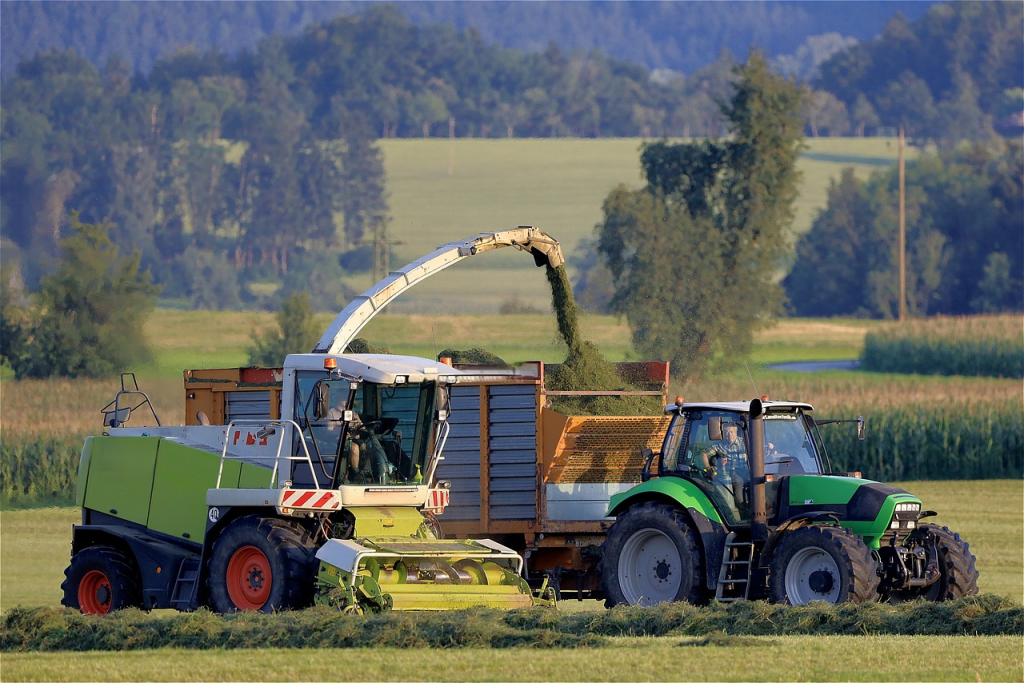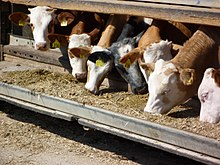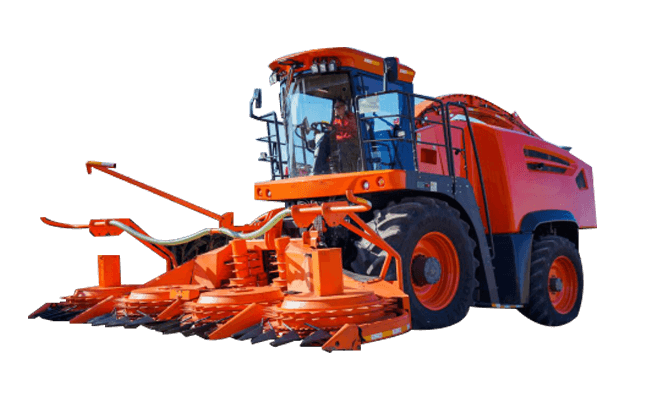In modern livestock farming, the demand for silage feed continues to grow. For farm owners, finding efficient, fast ways to harvest and process feed crops has become essential. Traditional harvesting methods often fall short in meeting the needs of large-scale operations, especially when it comes to storing crops like corn and grass for long periods. These crops need to retain their nutritional value, and the harvest process needs to be quick to ensure freshness and palatability.To meet these challenges, the silage harvesters have become an ideal choice due to its integrated operation.
Silage harvesters not only harvests and chops feed but also loads it directly into transport vehicles. This entire process is efficient and fast, requiring minimal manual intervention. With the advent of silage harvesters, feed collection has become far more streamlined, allowing farm owners to achieve a “harvest-and-store” workflow seamlessly.
In this article, we’ll guide you through the principles of how silage harvesters work, highlight their key features, explore various applications across different farm setups, and offer practical buying tips to help you select the best equipment. With the right silage harvester, feed harvesting can be more efficient, and feed quality can be significantly enhanced.
Contents
- 1 1. Working Principle of Silage Harvesters
- 2 2. Key Features of Silage Harvesters
- 3 3. Applications of Silage Harvesters
- 4 4. How to Choose Silage Harvesters
- 5 5. Why Is Silage Better Than Hay?
- 6 6. How Much Silage Does Each Dairy Cow Need Daily?
- 7 7. Minnuo Silage Harvesters: A High-Performance Choice for Reliable Silage Processing
- 8 Conclusion
1. Working Principle of Silage Harvesters
A silage harvester is primarily used to harvest crops like corn, grass, and sorghum, chopping them into sizes suitable for silage. Then, it transfers the chopped material to transport vehicles through a powerful blowing system. The harvester’s basic workflow includes several key steps: cutting, chopping, transporting, and blowing.
- Cutting: High-speed rotating blades cut crops from the ground, completing the initial harvesting process.
- Chopping: The crops enter a chopping mechanism where they are shredded into small, silage-ready particles.
- Transporting and Blowing: After chopping, the silage material moves through a transport system and, with the help of a blowing system, is directed into the waiting transport vehicle, making it easy to move on to fermentation and storage.

2. Key Features of Silage Harvesters
Efficient Cutting and Collection
Silage harvesters are equipped with high-speed rotating cutting blades that swiftly cut crops from the ground and chop them into ideal particle sizes. After cutting, the harvester’s transport system collects and transfers the silage material into waiting transport vehicles.
Precise Cutting and Adjustable Length
Many modern silage harvesters offer adjustable cutting length settings, allowing users to customize particle size based on livestock needs, improving both palatability and digestibility. Different cutting modes are available to suit various crop types and feed mix requirements.
Powerful Feeding System
The feeding system automatically adjusts the feed rate based on crop density and quantity, ensuring a smooth, continuous cutting process. It also helps prevent clogging, reducing downtime and boosting overall efficiency.
High-Performance Blowing System
The powerful blowing system efficiently transfers chopped silage into transport vehicles, keeping the material evenly distributed in the truck bed and minimizing waste during storage.
Adaptability to Various Terrains
Silage harvesters are built with strong off-road capabilities, allowing stable operation across different terrains. Whether working on hills, slopes, or uneven ground, the harvester effectively manages diverse conditions, enhancing productivity.
3. Applications of Silage Harvesters
Silage harvesters are widely used in the following settings:
- Large Ranches and Dairy Farms: Ideal for harvesting large quantities of forage crops like grass and corn, helping to reduce feed shortages and ensure a steady supply.
- Family Farms and Cooperatives: Well-suited for seasonal silage harvesting, increasing feed reserves to meet year-round supply demands.
- Commercial Feed Processing Plants: Silage harvesters enable quick and efficient collection of forage crops on feed production lines, ensuring high-efficiency raw material gathering.
4. How to Choose Silage Harvesters
When selecting a silage harvester, consider the following critical factors:
- Harvesting Efficiency and Width: The cutting width directly affects the machine’s efficiency. Choose an appropriate width based on the size of your farm and crop density to maximize productivity.
- Adjustable Cutting Length: Look for a model with precise cutting length adjustments to meet different feed requirements, enhancing both palatability and digestibility for livestock.
- Reliability and Ease of Maintenance: Opt for high-quality equipment that is simple to operate, has low failure rates, and is easy to maintain, reducing downtime and improving operational efficiency.
- Fuel Efficiency: A fuel-efficient harvester can significantly reduce operating costs, especially on farms requiring extended, continuous work.
- After-Sales Service and Parts Support: Reliable after-sales service ensures equipment stays in top condition, which is particularly important for machines needing regular parts replacements.
5. Why Is Silage Better Than Hay?
Silage is often better suited than hay for feeding ruminants like dairy cows and beef cattle due to its rich nutrients, high palatability, efficient digestibility, and stable year-round supply.
Richer Nutritional Content
Silage is harvested and fermented when crops are at their peak nutritional value, preserving high levels of protein, carbohydrates, and vitamins. Therefore, silage has a higher nutrient density compared to hay, making it ideal for cattle with high nutritional demands. Hay, on the other hand, can lose some nutrients, particularly vitamins and water-soluble nutrients, during drying.
Better Palatability, Boosting Intake
The fermentation process makes silage softer with a slight acidity, which most livestock find appealing. This enhanced palatability can significantly increase feed intake. In contrast, hay can be coarser, making it less palatable, especially if it has a high fiber content, which may reduce feed intake.
Higher Digestibility
During fermentation, some fibers in silage break down, making it easier for ruminants to digest and absorb nutrients. This high digestibility allows animals to get more nutritional value from each bite, improving feed conversion and supporting healthy growth and production. Hay contains more raw fiber and is harder to fully digest, resulting in a lower rate of nutrient absorption.
Long-Term Storage with Nutrient Stability
When stored in an airtight environment, silage can be preserved for a long time with minimal nutrient loss, making it ideal for feeding during winter or when fresh feed is scarce. Hay, while also storable, can lose nutrients over time and may develop mold or lose palatability if storage conditions aren’t ideal.
Increased Milk Yield and Meat Quality
Silage’s high nutrient and energy levels can effectively meet the high production needs of dairy cows, supporting lactation and improving milk yield and quality. For beef cattle, silage promotes healthy weight gain, which can lead to higher-quality meat.
Ideal for Large-Scale, Year-Round Supply
Once harvested, silage can be stored in silos or bags and used as needed, providing a stable feed source throughout the year. In contrast, hay is affected by seasonal harvests and weather conditions. Rain, for example, can interfere with drying, impacting hay quality and storage.
In summary, silage offers significant advantages with its rich nutrients, high palatability, and easy digestibility, making it an excellent choice for livestock with high growth or milk production needs. Hay, however, remains an economical option as a staple feed, and the two can be effectively combined to meet various dietary needs.
6. How Much Silage Does Each Dairy Cow Need Daily?

Generally, lactating dairy cows require about 30-40 kilograms of silage per day. Farmers adjust the exact amount based on the cow’s body weight, lactation stage, and the mix of concentrate feed to fully meet all nutritional needs.
- Basic Requirement Estimate
- Medium-sized dairy cows: around 30 kilograms of silage daily.
- Large, high-yield dairy cows: around 40 kilograms or more, especially during peak lactation when higher nutrition is essential.
- Body Weight Calculation
Silage requirements can be estimated as a percentage of body weight, usually around 2-3% of the cow’s weight. For example:- A 600-kilogram cow needs about 12-18 kilograms of dry matter per day.
- Since silage has high moisture content, with dry matter making up roughly 30% of its weight, a 600-kilogram cow would need about 30-36 kilograms of silage daily to meet its dry matter needs.
- Lactation and Nutritional Needs
During lactation, cows need increased nutrition, so the proportion of silage is usually higher. Farmers often combine this with energy-dense concentrates to meet the high protein and energy demands of milk production. - Feeding Schedule and Feed Mix
Silage is typically fed alongside hay and concentrates to ensure balanced nutrition. Dividing feed across different times of the day can also improve intake and digestion.
7. Minnuo Silage Harvesters: A High-Performance Choice for Reliable Silage Processing

As a manufacturer of precision agricultural machinery, Minnuo is committed to providing stable, efficient, and easy-to-operate silage harvesters that help livestock farmers improve feed collection efficiency. Minnuo silage harvesters deliver exceptional performance in cutting precision, feed-in efficiency, and blowing stability, along with excellent adaptability to complex terrains. Minnuo also offers professional technical support and comprehensive after-sales service, ensuring your equipment performs optimally during harvest season.
Conclusion
Silage harvesters play a vital role in harvesting and storing forage feed, making them essential for boosting farm productivity. This article has provided insights to help you choose the right model based on your farm’s specific needs, ensuring both the quality and quantity of your silage. If you’re looking for a highly efficient and reliable silage harvester, feel free to reach out to Minuo. We offer customized solutions designed to help you achieve the best results in farm management.

